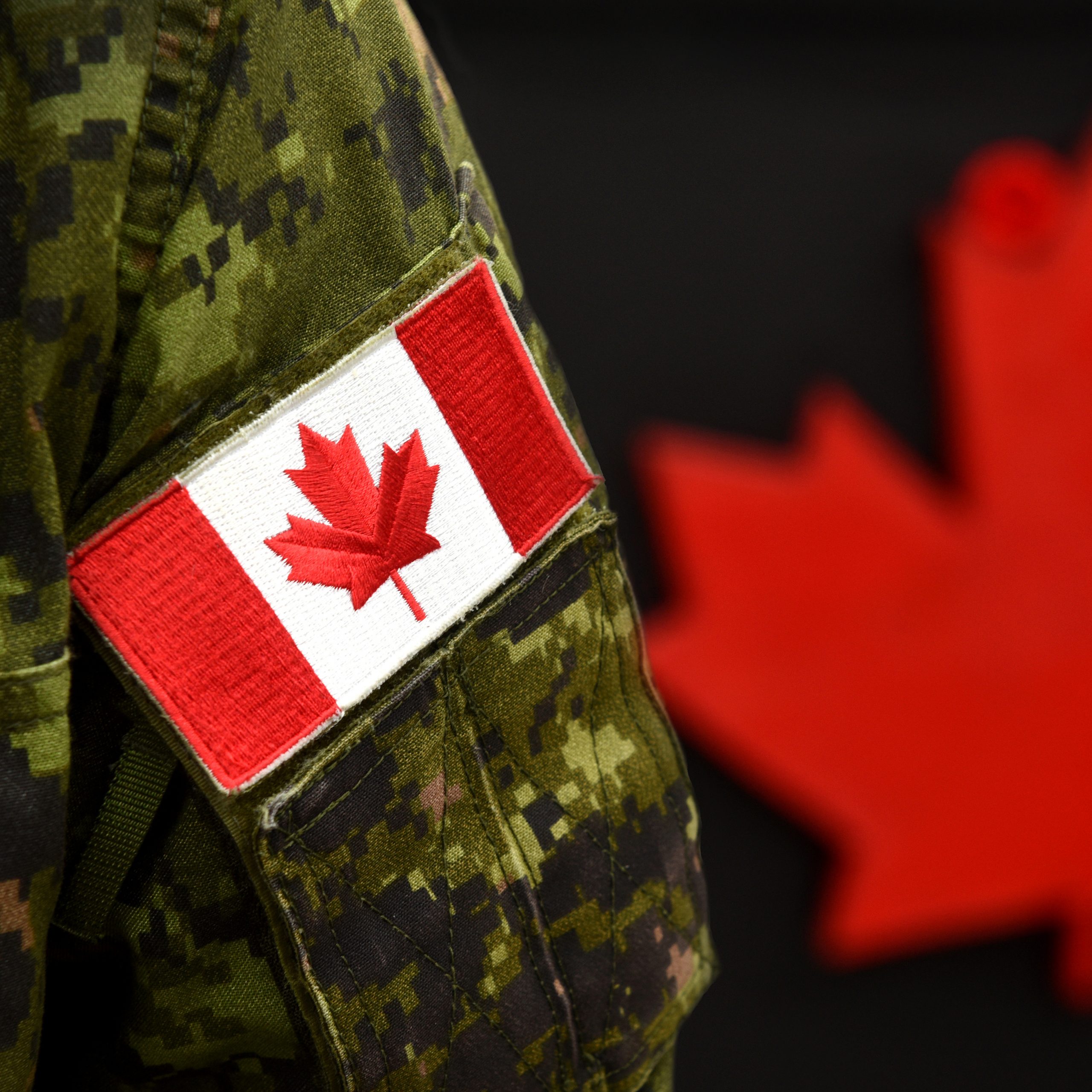
Looking for work when your last boss was the Canadian Military.
Blogpost by Jienan Chen
November 10, 2022
Job transitions can be hard, and when you leave the military, there may be additional hurdles to transition to civilian employment. Jienan Chen digs into what is involved!
The Canadian Armed Forces (CAF) is a significant employer within Canada. While less than half a percent of working-aged Canadians are employed in a military capacity, that still works out to over 97,000 Canadians who are currently active members of the military, with a further 461,000+ individuals who identify as veterans, according to the 2021 census.
For civilians, an immediate assumption when thinking about a military career is to reduce the job solely to the types of military exercises asked of a soldier, however, the skills that are required to support the work of the military are incredibly wide and varied. As a career choice, employment in the military can look very different from one person to the next, with 100 distinct, in-demand occupations currently listed on the Canadian Forces website. Due to the number of people and variety of skills required, the military is also a very large training source within Canada, attaching many of their recruits to skilled employment training or post-secondary education in return for their active services.
For members of the Canadian Armed Forces, it is inevitable that one day that they will leave it; some after a shorter stint, others after a full career. On average, the Canadian military experienced a turnover of approximately 6.6% of people between 2014-2021, which means, if these current numbers hold steady, that this year, approximately 5,000+ new veterans will be seeking new employment as they return to civilian life. Some of these individuals will use the skills and education that they gained in the military to find employment, while others will take this life change as an opportunity to retrain in a new occupation. However, employment readiness is much more than the sum of one’s skills and certifications. Military personnel may experience unusual barriers to civilian employment due to their previous experiences, and sometimes this transition is challenging. Being in the army for so long, Canadian forces personnel will have adjusted to military culture, which has marked differences to civilian life. Although we adapt our behaviours and thinking to our environments, it might take time to do so. This is especially the case with transitioning from military life to civilian life due to differences between the two.
Military life is characterized by discipline and teamwork. For instance, there is a strong chain of command, and the stark knowledge that deviation from orders could mean the difference between life and death for someone in an active crisis zone. As a result, there is a great deal of control that extends to all areas, including work tasks, food, clothing, and housing. In contrast, these elements do not exist in the same ways in civilian life. To someone who has just left the military, civilians may seem “to lack structure, direction, and discipline.” This may have to do with the fact that when one works a 9 to 5 job, one can leave work without being expected to necessarily complete a task, or are, in some workplaces, rewarded for creative takes on their work tasks. Besides a possible greater flexibility in the workplace (depending on the job, of course), there is no denying that the average Canadian exerts their own authority over what to eat, what to wear, and where to live. Due to the many differences between civilian and military life, the Government of Canada website “Introduction to Transition” explains that both parties may have a hard time relating to each other.
To help members of the CAF transition to civilian life, the Canadian Armed Forces Transition Group created a five-step model. They are: “Understand Transition,” “Plan for Transition (Through Career),” “Train for Transition (In-Service and Release Phase),” “Undergo a Personalized Transition Experience,” and “Transition Successfully and Reintegrate into Civilian Life.” The training phase includes elements discussed in the August blogpost, such as “consider your skills, competencies, and interests for future projects” and “learn about and develop your cover letters and resumés.” But it also involves speaking with “your family [to discuss] where you might settle post release.” The “Personalized Transition Experience” program is still under development. From what I know, members of the Canadian Armed Forces can seek education or career counselling.
Both steps are crucial. The Senate of Canada website states that many recruits join the CAF at a young age. From that point, “the military takes care of them and their families throughout their career in uniform.” Therefore, when they leave the forces, although they possess useful skills—such as teamwork and leadership, or critical thinking skills, they may not possess the same amount of experience with job applications, resumé writing, etc. as their civilian counterparts. This is where learning about the job application process or what to include on a resumé can be extremely useful. And if one hasn’t taken advantage of education opportunities available during service or you require additional training, seeking secondary education afterwards could prove to be useful in your new life. According to Statistics Canada, the higher your education level, the more likely you were to be employed over the past 5 years, and the trends show that the labour attachment gap between highly educated/skilled employees vs. lower educated/unskilled employees is growing. Besides the added boon to employability, the additional benefits of community and network building that happen in an educational setting may provide additional help to veterans to transition from their military life as they form new communities and connections.
In Canada, several non-for-profits have developed partnerships with the CAF to help members of the forces transition to civilian life. The Veterans Transition Network provides a list of resources that may help (however, the CAF has not verified or endorsed any of them). Many institutions provide education opportunities and support for ex-military personnel. For example, here in Alberta the University of Alberta recently initiated a two year Military and Veteran Friendly Campus (MVFC) pilot program geared to support former military personnel as they transition to education.
It is possible for civilians to make transitioning easier for veterans, although some veterans note that it can be difficult for life-long civilians to understand where they are coming from. Jamie Howard gives some suggestions, such as “be available to talk and listen about things in general,” “offer help in specific ways,” or “offer a job if you or someone you know is hiring.” The latter lays at the crux of transitioning. Some employers are wary of hiring former members of the military due to some common reasons, such as fear that their new employees will be too rigid and uptight, have problems with anger management or PTSD, or they feel that veterans may not fit well within their company culture. But of course, the picture of a former soldier or marine as a stiff upper-lipped, stern, and austere person with anger management issues or debilitating PTSD is clearly a stereotype, which is as damaging and unhelpful as stereotypes generally are.
For any jobseekers who do experience these types of barriers, they can (and often do) proactively access commonly available supports, such as employment training, on-job accommodations, and certain mental health supports to become employment-ready. Coming to an understanding of one’s barriers is always a good first step for jobseekers prior to applying for work. This allows you to address any barriers that can be resolved or mitigated, gain insight into your specific needs in the workplace, and strengthen your ability to become an advocate for yourself or ask for accommodations if required. But the onus cannot be entirely on the employee for a good employment match. Employers are, as always, well-served to employ the same best-practices as they should for any employee regardless of their potential barriers, which includes dedication to inclusion, transparency about the job and work-culture, openness to job carving to best suit skills, and a focus on determining a good fit while minimizing biases.
While transitioning back to civilian life can have its own challenges, many of the common strategies for an employment transition holds as true for ex-military personnel as it does for civilians.
-
We always advise transitioning jobseekers to start with assessing your own skills and interests to determine what your new employment goals are, figure out any obstacles to those goals, and then chart your path to get where you want to be.
- Secondly when writing your resume, don’t focus only on the specific job tasks you used for your past work. Equally important to an employer is an employee’s transferrable skills or other qualities. For example, besides technical training and specific on-the-job experience to successfully carry out tasks, a stint in the military often emphasizes leadership skills, an intimate understanding of teamwork, a commitment to integrity, the ability to work under pressure, resilience, experience in a cross-cultural setting, and more. These traits are as highly valued in the civilian workplace as they were in a military setting and are definitely worth show-casing in a resume or cover letter.
-
Third, if you are finding your job search difficult, don’t be too proud to use supports to help you get where you want to be, if that is what you need! We have listed some specific resources for military transitions, but there are plenty of supports for employment in general (and many are offered for free), including OSP’s programs. There are experts who can help you find your way to your new employment goals.
And finally, good luck and stay positive! A job search can be a tough road, but achieving your goals are worth the effort.
If you are struggling to find work, OSP has the programs to provide support and bring you to your employment goals! Contact us at programs@osp.ab.ca
For more information on topics mentioned in this blogpost, consider the following resources:
In my research, I enjoyed this clip from the Rick Mercer Report, intended to give civilians a glimpse into a day in the life of the military: https://www.youtube.com/watch?v=WIk9pahX1IQ.
https://bva.org/challenges-veterans-face-when-leaving-the-military/
https://childmind.org/article/what-civilians-can-do-to-support-military-members/
https://sencanada.ca/en/content/sen/committee/412/veac/rms/01jun14/home-e
https://usveteransmagazine.com/2017/02/common-challenges-during-readjustment-to-civilian-life/
https://vtncanada.org/resources/
https://www.military.com/hiring-veterans/resources/10-reasons-to-hire-vets.html
https://www.military.com/hiring-veterans/resources/5-reasons-why-employers-are-not-hiring-vets.html
https://www.northwestcareercollege.edu/blog/going-back-to-school-as-a-military-veteran/
https://www.statista.com/statistics/442509/canada-employment-rate-by-educational-attainment/
https://www.ualberta.ca/admissions/undergraduate/resources/veterans.html
